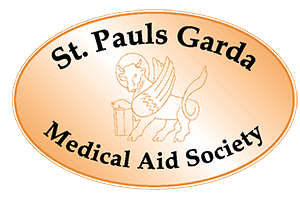Watch this video of Ms Ruth Delaney, Consultant Orthopaedic Surgeon specialising in the shoulder discussing ‘Sports Injuries of the Shoulder at All Ages‘.
This video was recorded as a part of SSC Online Public Information Meeting focusing on the Shoulder.
 Ms Ruth Delaney is a Consultant Orthopaedic Surgeon here at the UPMC Sports Surgery Clinic specialising in the shoulder.
Ms Ruth Delaney is a Consultant Orthopaedic Surgeon here at the UPMC Sports Surgery Clinic specialising in the shoulder.
Hello everyone my name is Ruth Delaney, I am a shoulder Surgeon at SSC and I’m going to talk about sports injuries and conditions that can affect the shoulder at various stages of life. A little bit about my background I spent 6 years in Boston doing my orthopedic training and most of that time was spent at this institution as a shoulder fellow so in my last year of training I got to spend some time in France before coming back to Dublin in 2014 and my practice is exclusively focused on the shoulder.
Shoulder pain is quite common the majority of us are going to experience shoulder pain during our lives at some stage and a quarter of people who have shoulder pain report that they have had it before as well so t can be a recurring thing. It can be quite debilitating in terms of sleep disturbance, in terms of affecting daily life and work and it can come from a variety of different sources it can be a little bit hard sometimes to figure out exactly where it is coming from.
That is where the specialist comes in, I suppose talking about the shoulder and sports, the sport that I know the most about is tennis and you can see wh, for example, tennis serve the shoulder is doing a lot of work there are different phases of the service and one of the important things about sort of keeping the shoulder healthy when you’re playing a sport like a tennis, is to remember that the shoulder isn’t working in isolation and so what’s important is from the ground up, so everything is connected and everything is part of what the physiotherapists and the S&C coaches will talk about as a kinetic chain so if you have good solid core strength, a stable base from your legs and core, then your shoulder is going to be that bit more protected when you’re doing things like playing tennis or swinging a golf club. The shoulder blade is also really important that’s a stable platform for the shoulder to function and if you think about the shoulder as a ball and socket with the socket relatively small and the ball having a lot of freedom of movement, its got to have a stable platform to work off and the socket of the shoulder joint is apart of the shoulder blade and that’s why I said when we send you to physoitherapy for your shoulder, the physio will often spend a lot of time working on your shoulder blader control and getting all those smaller muscles around the shoulder blade to work because they often go to sleep particularly when the shoulder is sore and a lot of the times when we go to the gym we train the bigger muscles and we forget about those small really important muscles around the shoulder blade, when the shoulder blade isnt really working well with the rest of the shoulder, its something we call scapular dyskinesis which is a broad term that just means kind of that the shoulder blade is out of rhythm and that in people who play overhead sports can increase the risk of shoulder pain, so again going back to for example a tennis serve so things that are going on with the foot position or with the knee bend can affect how the shoulder ends up having to compensate and lead to problems with shoulder pain the same thing with hip flexibility with trunk and the core strength and as we talked about the shoulder blade or scapula so that scapular position, all can feed into what happens when you try to go through the motion of a serve and a lot of us are stiff through for example the htoracic spine or that part of your spine between your shoulder blades and again that can have an affect on how your shoulder works so when you’re playing a sport that involves a shoulder having to do something there’s a lot more going that often needs to be addressed when your shoulder is sore playing golf not strictly considered an overhead sport but when your at the extreme peak positions of a golf swing those positions can provoke shoulder pain so abduction is bringing your arm away from your body, adducton is the opposite bringing it across your body and you can imagine that there are parts of a golf swing at times that will be in the maximal extremes of those positions and when you bring your arm away from your body sometimes you can end up with something called impingement or when the ball and socket is up like this the ball is up like this we’ve got the roof of the shoulder over top here what we call the chromium you can get some pain from inflammation under there when your arm is across your body or in adduction that can particulary in younger golfers and we see it in hurlers as well with a similar positionsa of the shoulder, that can sometimes leave the shoulder vunerable to a less common type of instability which is out the back or posterior instablity, the biceps is an interesting muscle it has two tendons at the top end and one of those longer one goes right through the shoulder joint and repetive motions like a golf swing can irritate that tendon leading to tendonitis in there and that’s something we see commonly in people involved in many different sports the nice thing about a sport like golf while it can place demands on the shoulder we usually see that people are very well able to get back to playing golf and pretty much at the same level as they played before even when we do pretty complex shoulder surgeries for example repairing rotator cuff tendons or replacing the whole joint.
Collision sports are a little different the most common injury we see in people who play things like GAA, rugby, or hling is instability or dislocating the shoulder and the more common type of that is the shoulder dislocating at the front so the ball and socket joint ball come out the front of the socket and the reason that the shoulder is susceptible to that is that the socket is relatively shallow as well as being small that’s what allows us to have so much movement of the shoulder but in certain positions, particularly for example with the arms overhead the shoulder can be vulnerable to install, it and if you dislocate your shoulder for the first time at an age under 25 there is a very high risk of it happening again as you get a little bit older than 25 so peoples in their 30s, 40s who dislocate their shoulder for the first time those people have a much lower risk of it becoming a recurring problem. Sometimes you can have other injuries that happen with it and which are more common in people over 40 for example tearing rotator cuff tendons but the likelyhoof of the instability having to be addressed is much lower in these younger players often we end up looking at surgery to stabilize the shoulder and there csn be broadly speaking two types of surgery, one is a soft tissue surgery where we fix the soft tissue surgeries or the cartlidge bumper around the shoulder socket call the labrum and the other one is where theres more severe damage to the shoulder often in cases of multiple dislocations where we have to actually put a bone block on the front of the socket to stablise it and after those surgeries the rehabilitation time varies, it depens on the type of surgery, it depends on the type of sport that the player wants to get back to but the quickest would be typically about 3 months and it can often particulary the soft tissue surgeries take 6 months for the shoulder to be ready for the high demands of collision sport because those are probally the riskiest sports for the shoulder joint.
If we think about the type of symptoms that people typically get in the shoulder, the shoulder can be sore it can be weak, it can be unstable like we’ve just spoken about or it can be stiff. These are not mutually exclusive a shoulder can be sore and weak at the same time. The other thing that we often think about as well and it’s important not to forget is that a problem in the thneckco in the cervical spine can present as shoulder pain or weakness around the shoulder and equally a problem in the shoulder can give you some neck pain and a lot of people have both going on at the same time so it can sometimes take a while between the spine specialist and the shoulder surgeon to figure out between us okay wheres most of the pain coming from which should we tackle firstor often we tackle the two things in parallel sometimes injections might be part of that because as well as helping the inflammation and hopefully making your pain or symptoms better they also give us good diagnostic information if an injection into the neck does nothing for your shoulder symptoms but sn injection into your shoulder helps your shoulder a lot then obviously the pain is coming more so from the shoulder and we prioritize taking care of the shoulder so the kind of diagnostic work up of shoulder symptoms can often be complex and so the history that yiu as the patient give us is something that we learn a lot from because there a typical patterns of symptoms for some things and typical sotries and that’s why where the questions come from that we often ask people presenting with shoulder problems. We get a lot of information from actually examining the shoulder and during the height of the COVID pandemic when we were doing video consultations and trying to figure things out without being able to hands-on examine people, I think that made a difference with shoulders it was a little harder to figure things out sometimes and then imaging will often play a part too, plain x-rays are very good for certain shoulder conditions and sometimes are better than MRI’s for example if you have tendonitis in your rotator cuff and there’s some calcium in it or what we call calcific tendinitis we can see that much better on an x-ray than an MRI, we can see the bones much better on an x-ray than on an MRI so if you have a shoulder fracture or if you have shoulder arthritis where you want yo see the bones and the shape of them an x-ray will often help us more so than an MRI. The MRI helps us a lot for soft tissues so if you have a weak shoulder and we’re not sure if there’s a torn tendon that’s when we might look for an MRI or if there’s an unstable shoulder we might get a special type of MRI with dye in the shoulder which will outline the structures that get injured or instability. Sometimes we need other studies too, for example, a CT scan is sometimes useful for certain situations as well so which imaging is best depends on what we’re thinking the problem is and sometimes we need more than one type of image.
Some of the most common diafnosediagnoses see are rotacuff problems, frozen shoulder which ill explain in a few minutes, arthritis of the shoulder and instability, and course many other shoulder injuries can also present particularly in the context of sports things like broken collar bones, ac joint or the joint at the end of your collarbone getting injured during sports or fall but I think there four are probably the most common that we see. So if you have an injury and you end up getting to the point where it’s an injury that’s appropriate for surgery and you’re considering shoulder surgery, I think it’s important to get advice from a shoulder specialist. There is a lot of misinformation out there of course there is google snd all of that but even sometimes within the medical community because the field of shoulder surgery and shoulder care is evolving so fast that unless it’s a shoulder specialist that you are talking to you may not be getting the most up-to-date advice or the appropriate advice specific to your condition. Anytime we talk about surgery, its always a risk-benefit balance, any surgery will have risks even the smallest surgeries do even the minor keyhole surgeries there will be a small risk of infection, a small risk of stiffness, and a small risk of pain not resolving. While those problems are very uncommon, if they happen to you then that’s something you know is a real problem and can mean your recovery takes longer. The potential benefits of the surgery have to be bigger than the risk. If we offer someone surgery it means we think their particular problem will benefit a lot from the surgery and far outweighs any of the potential risks. The other thing about the surgery that is important to think about is the recovery and rehabilitation time, some shoulder surgeries take quite a while to recover from and the rehabilitation is quite intense. Preparation is important, that is our job to help you prepare and what to expect. The website also helps with providing information. I explain this information and you can read it back at home as well.
Going back to the main diagnosesgoingnd go through each of these sorts of broad groups. You hear a lot about the rotator cuff, it is a group of four muscles that are deep inside the shoulder attached to the shoulder blade and then they sort of coalesce and form a cuff if you like of tendons which is the white part you can see in the picture around the humerus, the right-hand side is the front view and on the left is the back view. They can be involved in various processes in the shoulder that cause pain, they don’t have a great blood supply so they do undergo normal wear over time, and sometimes in the context of that where the tendons can get inflamed, they can get inflamed just from repetitive use and cause some inflammation around them and that space, that is one of the most common things that we see. Other times the tendons can tear at a point where a little bit of the tendon detaches or it can tear from a sudden trauma/fall. There can be many different ways to handle it, you will almost see some sort of abnormality in the rotator cuff and MRI in anybody over the age of 25 or 30 because normal wear over time will show up on the MRIs. The inflammation I spoke about or bursitis or tendinitis will often respond to physiotherapy and working on the shoulder blade control. Sometimes we will add an injection into that space over the tendon and that can be very effective occasionally we will do keyhole surgery depending on how large the tear is as they are at risk of getting bigger and more painful. After rotator cuff surgery you will be in a shoulder immobilizer for 4 weeks, 6 weeks if the tear is larger. You start with gentle exercises initially and no driving during that time. Physiotherapy is key, range of motion or stretching is the most important part of the beginning and we don’t have the physios do any strengthing or weights or resistance bands until about 3 months as the tendon fibers have not healed enough to take any resistance by that stage. So typically it takes about 6 months to get over a rotator cuff repair. It is not a quick fix.
Moving on to something else in the shoulder is frozen shoulder. Frozen shoulder, is something we don’t understand exactly why it happens. Its other name is adhesive capsulitis so it’s an inflammation of the capsule of the shoulder so the lining around the ball and socket of the joint capsule gets inflamed often for no good reason more common in women, the typical age group would be the 40s and 50s. There are associations with hormonal changes like menopause, diabetes, and thyroid but it can affect anyone we see often in people who have none of those risks factors. What happens is the capsgets get inflamed and the shoulder can get quite painful and in the early stages it hant gotten stiff so sometimes the diagnosis is not clear in the beginning as that capsule gets more inflamed and thicker the shoulder gets tight and stiff and it becomes difficult to move and that can be a really difficult problem to have. Thankfully most of these cases resolve without surgery, the capsule is inflamed so if we use anti-inflammatory strategies those are typically very effective so anti-inflammatories that are not steroids things as neurofen or other drugs from that group. Sometimes we do use steroids, so cortisone injections can be very effective but it’s important as to where they are put. Steroid tablets we might use if somebody having a lot of pain just for a short course maybe a week.
To talk about shoulder arthritis it’s worth mentioning, people don’t tend to hear about it as much as hip & knee arthritis so it’s the cartilage wear of the main shoulder joint so again the ball and socket joint, the ac joint which is up at the top between where it says clavicle there and acromion so clavicle being your collar bone and acromion being your collar and the chromium being the pointer shoulder, that little joint up there id not your main shoulder joint and almost every single MRI will show some wear of that joint, so you may see the word arthritis in an MRI report but if it’s talking about the ac joint the that does not shoulder arthritis most of the time that doesn’t even hurt, sometimes that wear can get inflamed if your pain when someone right on that shoulder top.
There are different ways we can treat this similar to arthritarthritis hip or the knee, pain relief, physiotherapy can sometimes help, some people find it doesn’t help their arthritis so we tend to just try it out, if it’s not helping we don’t push it, injections can help they won’t change underlying arthritis but they can take down the inflammation associated with it which sometimes helps with the pain so cortisone can do that, there are other injections that are sort like a gel that mimics the joint fluid we call them viscosupplementation injections, sometimes they work for some people. There are various things we can try before surgery. In people with milder stages of arthritis, PRP can sometimes give pain relief, in some cases a younger patient with milder arthritis e might consider a keyhole surgery to clean it out but again were not going to affect underlying arthritis but we are may buy some time and get some pain relief. Ultimately the most definitive way to treat shoulder arthritis is to replace the joint. The implants where we replace the joint with metal and plastic just like in a hip. The longevity of those implants can be affected by heavy use of the shoulders or high-impact activities but a lot of sporting and recreation activities are just fine things like golf, swimming, tennis, and yoga all of those are well tolerated by the shoulder replacement. This is one of the situations where we get a CT scan because we see the bones much better on action than on any other type of scan and that allows us to plan your shoulder replacement in a very individualized way where we can figure out exactly what shape your socket is and which implants are going to fit you best. It is possible to return to recreational activities and often it’s easier to go back as you don’t have the pain from your shoulder arthritis. This is what a total shoulder replacement looks like. There is also something called the reverse shoulder replacement, you can see if we go back in the anatomic or primary total shoulder, the ball and socket are right where they used to be in the native shoulder, but we can also put the ball and socket the other way around and the reasons we might do this are if the rotator cuff was torn as well as having shoulder arthritis, the regular or anatomic shoulder replacement will not work unless they are intact rotator cuff tendons around it and this was a real problem up until a french man named paul Grammont discovered that reversing the geometry of the shoulder allowed the shoulder replacement to work without rotator cuff tendons so now if you have shoulder arthritis and a rotator cuff tear that isn’t fixable you can still have a shoulder replacement it’s just going to be reverse shoulder replacement. Similarly, if there’s an awful lot of wear on the socket of the shoulder from arthritis we can’t use the regular socket, the plastic socket that goes in anatomic replacement but the reverse shoulder replacement can handle that problem. Sometimes we even end up doing a reverse shoulder replacement for a very large rotator cuff tear where the shoulder is not functioning anymore even if there isn’t arthritis so if the rotator cuff tears the tendon tear is too big to fix and the patient has trouble raising their arm, if we reverse the ball and socket by doing this we can allow the big deltoid muscle on the outside of the arm to take over the job of raising the arm, obviously this isn’t meant for younger people we know it lasts pretty well for probably about 15 to 20 years so we don’t want to be putting it in a 40-year-old, but that’s what I mean we say that you probably have more options when you have a bigger rotator cuff tear at age 60 or 70 than you do when you’re younger. There are many things we can do to help those problems.
What’s involved in a shoulder replacement? They’re done under general anesthetic most people would spend about two nights in the hospital, four weeks in that same shoulder immobilizer so again you can’t drive after that first four weeks. People with shoulder arthritis often find the pain relief is dramatic even in the first few days, despite the fact we’ve just done a very significant surgery, the surgery pain is nothing compared to the arthritis pain has been for all those years. Physiotherapy works on regaining motion and then strengthening, it usually takes about 6 months to work through the rehab program. In terms of returning to recreational, it depends on what the activity is but golf is probably four or five months, swimming maybe a little bit earlier and tennis is probably closer to six months.
This is what we do we the ct scan that we have you go get before your shoulder replacement. It shows us in great detail the measurements and the angles, particularly about the socket of your shoulder and we can even order a model of the socket of your shoulder and a guide that helps us in surgery position the implants exactly where we planned on the software so it’s a way of doing the surgery on the computer before we do it in you its trial without error its sort of like a flight plan for a pilot, it’s the same so pre-op planning is really important and something we have been able to introduce within the past year is using mixed reality which is where you overlay a virtual reality hologram of that patients individual shoulder and the shape of their socket and the guide over the real environment when you’re operating by wearing this Microsoft hololens which is what I am doing in the picture on the right and that improves our accuracy in implanting the shoulder replacement so there are a lot of exciting things happening around the field of the shoulder surgery particularly replacements.
The benefits of staying active overall in terms of the shoulder and the body, in general, will usually outweigh any wear and tear issues that may come along and the shoulder is susceptible to ear and tear for all the reasons that we’ve spoken about before. I think doing simple things to receive your shoulder joint longevity when you play sports are worthwhile, ao thinking about that kinetic chain if you have some weakness in your core or your hips that may affect your shoulder especially playing things like golf or tennis, also play collision sports the kinetic chain is equally important and that’s why the strength and conditioning training all feeds in. Footwork is important especially in sports like tennis so you’re not overextending your shoulder, your tennis coach can help. Then having the right gear and be that for the weather, the footwear all of those things protect your body.
That is all in terms of my slides, id is more than happy to answer some questions afterward, thank you.
I suppose rather than the age as a number we look at the whole picture and so if somebody is of a certain age but in pretty good condition medically its often possible to go ahead, I would always defer to the genesis and our pre-op assessment clinic, so you know that particular person has a pacemaker, is on warfarin those things don’t prevent us from doing surgery there are some challenges in terms of warfarin being a blood thinner, making sure we talk to their cardiologists or whoever is in charge of that, that we have an alternative way around that to prevent too much bleeding and surgery but also keep them you know the way their blood the way it needs to be.
I don’t think we would write someone off and say they can’t have it, they’re having an awful lot of pain and other things aren’t working like medication injections sometimes the pain specialists can do nerve blocks so there are other ways if someone truly id medically unfit for the operation and the anesthetic but we don’t have a specific age cut off, I have certainly done people in their 90s.
It’s unusual with a frozen shoulder for the movement to get better and the pain still to be there so I would wonder if there is something else going on that maybe there was a frozen shoulder and that’s now sort of settled down that capsular inflammation is gone but there is still a pain for a different reason because the usual progression is for frozen shoulders is the pain settles first and the movement takes a bit longer so normally its only kind of when the pain has settled that the movement is possible to increase. Normally what you see is someone is left stiff but isn’t as painful anymore. If you are not stiff anymore but you are still painful I would say go back and re-evaluate with either your physio or a shoulder specialist.
It is certainly treatable, one of the big challenges in shoulder care is arthritis, now true arthritis of the actual ball and socket joint in a young patient because its rare but when it does present, it is treatable snd there are a lot of things we can do in terms of pain management.
You can have a shoulder replacement at a young age and certainly, we’ve done it in some situations, people with aggressive rheumatoid arthritis type things but the problem with it is that the shoulder replacement we know last pretty well for 15 years many years so if you have a shoulder replacement in your 30s you’re going to be looking at a revision and also younger patients will tend to be that bit more active and be a bit harder on it because you’ve got such bad pain from arthritis and then you feel great when we do a replacement and you sort of overdoing it so somebody that age we would try and hold of as long off as long as possible from doing a replacement or we might do another type of surgery if the arthritis was mild to moderate where we do keyhole surgery. The options are varied to your age and the severity of your arthritis.
They kind of fall into the same category, where a labral repair is one type of shoulder stabilization surgery so the labrum is a cartilage bumper around the socket of the shoulder that contributes to the stability of the shoulder when you dislocate the shoulder, the labral almost always tears. If you have done no other damage to the shoulder and it’s pure just a labral tear, you may just be able to have keyhole surgery to repair the labrum and stabilize your shoulder that way.
If you play a collision sport or if there is a bit more damage to the shoulder in addition to your labral tear, if you’ve got some boney damage so the front of the stock that the bone can get worn down or the back of the ball as the shoulder sort of comes out the back of the ball hits the front of the socket and can have it sometimes repairing the labrum won’t be enough on its on to make that shoulder stable so then we do other types of stabilization surgeries that are often are open sometimes using a bone block at the front of the socket, so a labral repair is one type of shoulder stabilization surgery but there are a few different types depending on the situation.
I think if you have had 3 dislocations, then it is very likely that there is damage to the inside of the shoulder the labrum that we were just talking about, and possibly some of the boney structures that are leading to it being more likely to dislocate and easier to dislocate as it goes on and I think in that situation it would be a good idea to see a shoulder specialist and have a special type of scan called an MRI Arthrogram or a CT Arthrogram which is a scan where they put dye in your shoulder, where we can see those structure better.
Most frozen shoulders don’t have surgery and are treated without surgery and how long it takes can vary if you do nothing at all with a frozen shoulder theoretically it will burn out itself so the whole process will be that the inflammation in the capsule will eventually die down and without any intervention and that can take two or three years to happen. The idea of treating it with anti-inflammatories or injections or even sometimes steroid tablets is to shorten the time until it goes away, particularly to shorten that painful phase. A lot of times when we do an injection it can shorten that painful phase within 6 weeks the pain starts to decrease, and the movement varies from person to person. Only a small minority of people doubt get better with injections or stretching and end up needing to consider surgery.
| To make an appointment with Ms Ruth Delaney please contact +353 1 526 2335 or email [email protected] |








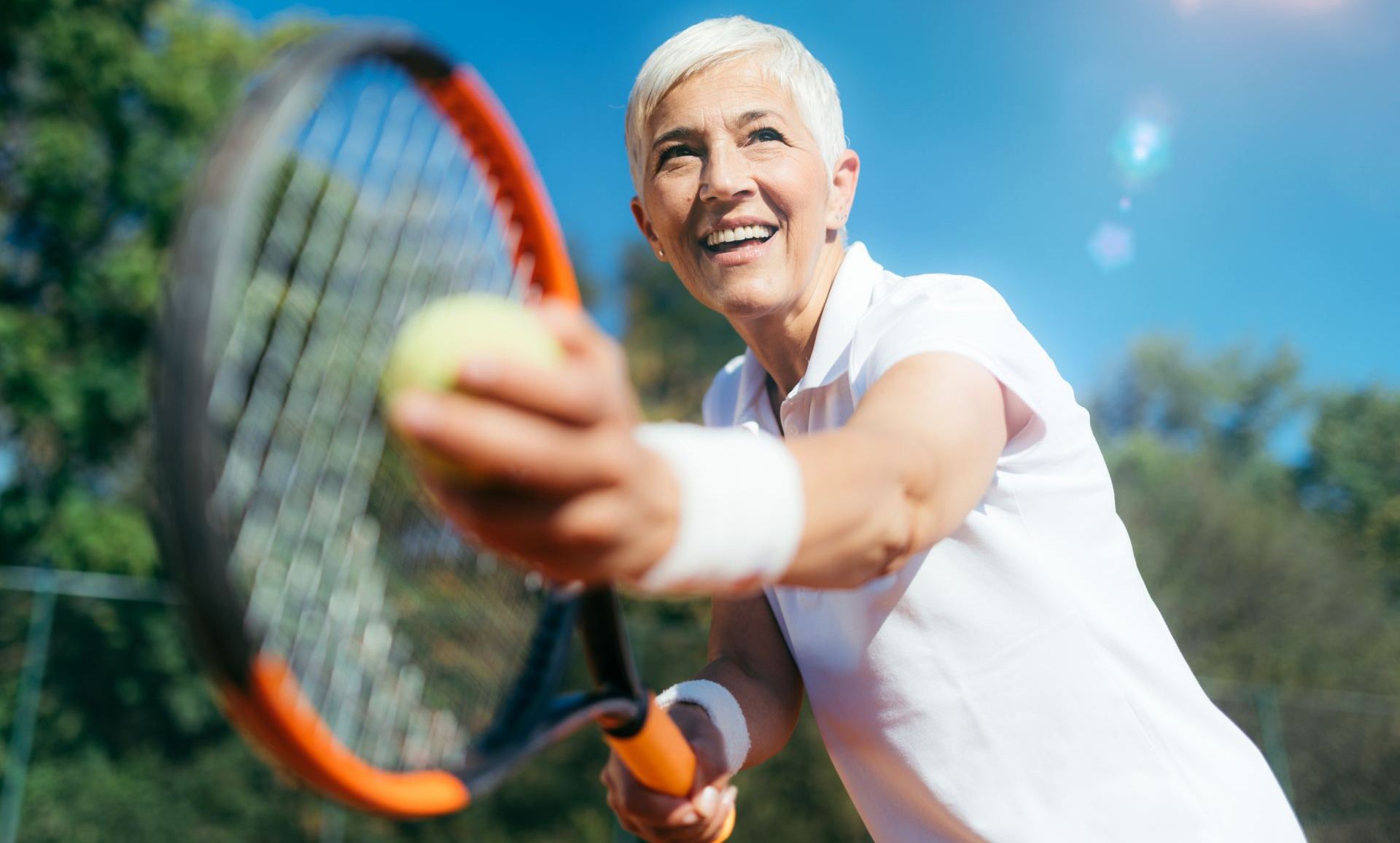
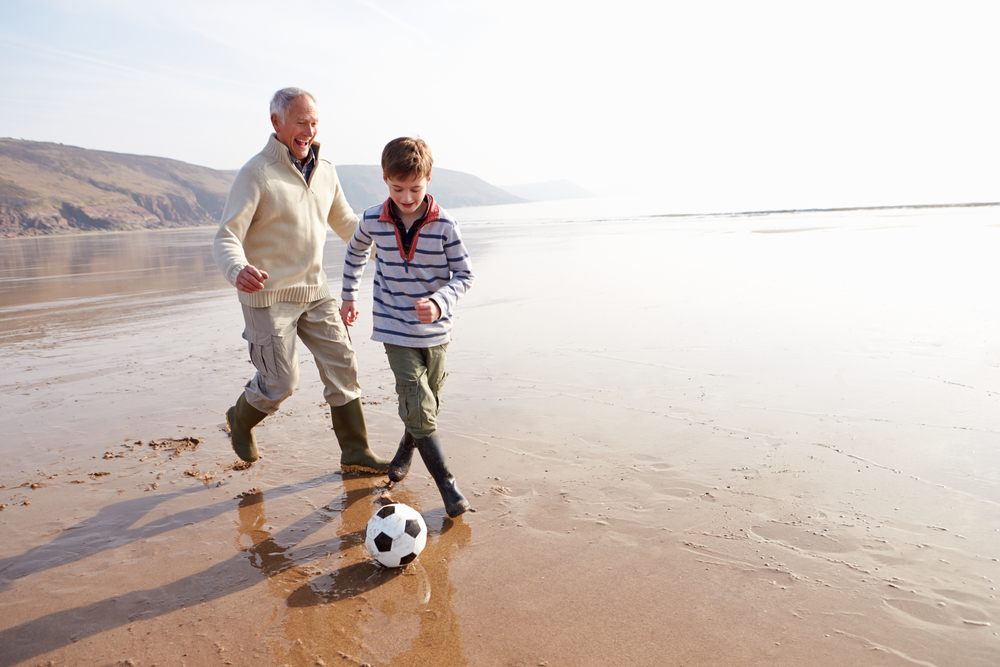
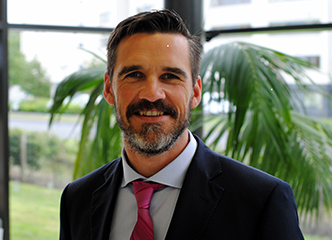

 Neil Welch is Head of Lab at SSC Sports Medicine.
Neil Welch is Head of Lab at SSC Sports Medicine.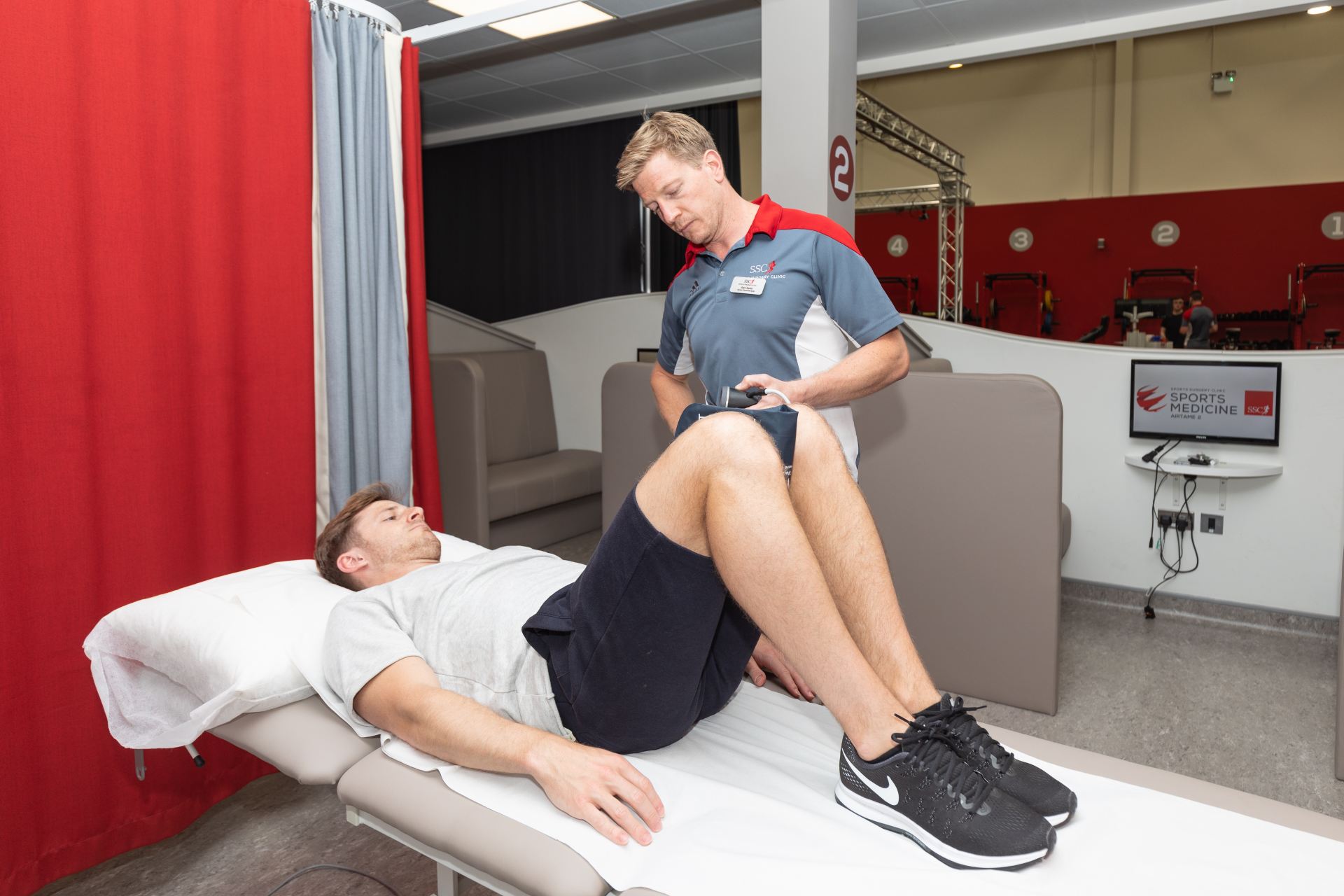

 David McCrea is a Senior MSK Physiotherapist at SSC.
David McCrea is a Senior MSK Physiotherapist at SSC.
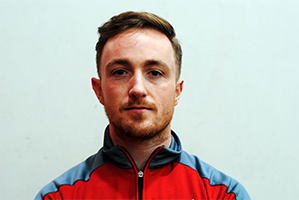 Luke Hart is a Senior Strength & Conditioning Coach and Fitness Lead at SSC
Luke Hart is a Senior Strength & Conditioning Coach and Fitness Lead at SSC 
 Mr Dan Withers is a Consultant Orthopaedic Surgeon specilising in the knee at SSC.
Mr Dan Withers is a Consultant Orthopaedic Surgeon specilising in the knee at SSC.






